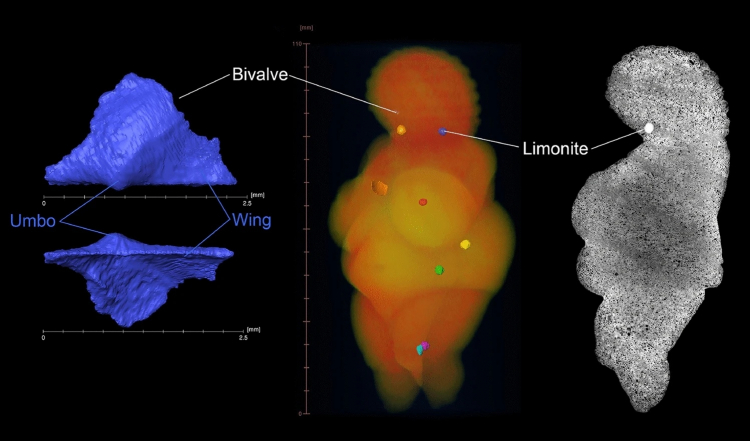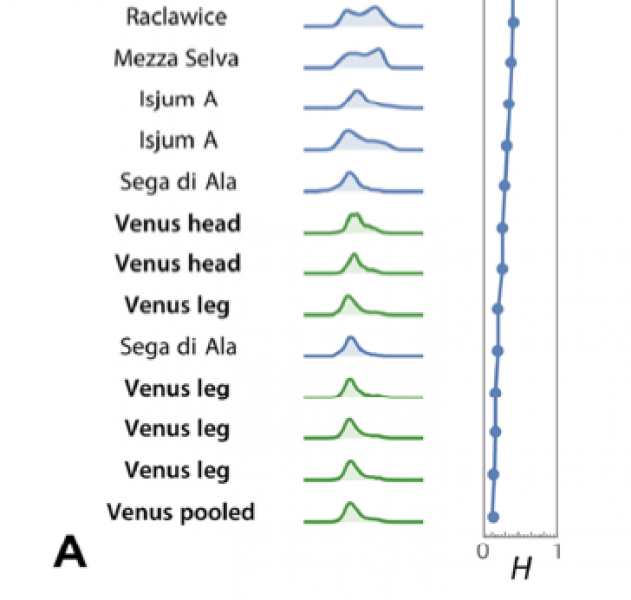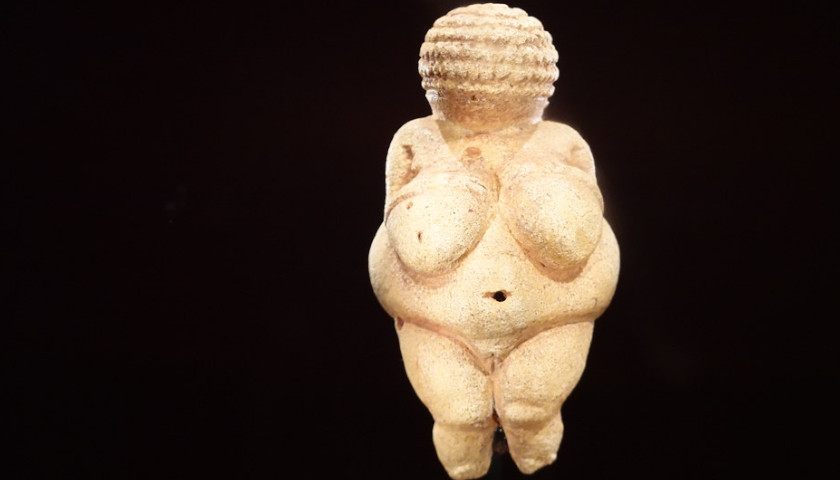by Ross Pomeroy
Scientists working with the Natural History Museum of Vienna may have uncovered the origin of the Venus of Willendorf, a 30,000-year-old figurine originally unearthed 114 years ago in Lower Austria near the Danube River.
Professor Gerhard W. Weber, head of the Department of Evolutionary Anthropology at the University of Vienna, and his colleagues detailed the discovery in a paper published Monday to the journal Scientific Reports.
The Venus of Willendorf is an eleven-centimeter-tall limestone statuette depicting an “adult and faceless female with exaggerated genitalia, pronounced haunches, a protruding belly, heavy breasts, and a sophisticated headdress or hairdo,” the researchers described. Artifacts like it are called Venus figurines, which have been found across Europe. The prehistoric Gravettian hunter-gatherer culture is thought to have crafted most of them.
Weber and his team scanned the Venus of Willendorf using micro-computed tomography. Micro-CT is a 3D imaging technique that utilizes X-rays to see inside an object, slice by slice. From this, they were able to determine the exact type of limestone used to make the figurine, and even noticed small limonite masses scattered throughout it. Limonite is more resistant to carving, so it could have posed problems for the prehistoric artist.
“Based on its size, the cavity at the navel could indeed have resulted from a limonite concretion which was broken off and was turned into a feature,” the researchers speculated.

The limestone from which the Venus was carved is called oolitic limestone because it’s composed of spherical grains that resemble tiny eggs.

To try to determine the Venus of Willendorf’s origin, the researchers sampled oolitic limestone deposits at numerous European sites ranging 2,500 kilometers from France to Ukraine to see if any matched the limestone in the figurine.
“We found a strikingly close match for grain size distribution near Lake Garda [Sega di Ala] in the Southern Alps of Italy,” they wrote.
The lake is about 930 kilometers of walking distance away from where the Venus of Willendorf was found in 1908, suggesting that the statuette traveled with its Gravettian owners far and wide. The Gravettians were thought to have relocated frequently in response to changing vegetation and prey availability.
“Our results suggest considerable mobility of Gravettian people in the time around 30,000 years ago… bypassing, or even crossing, the Alps in the times before the Last Glacial Maximum,” the researchers wrote.
Source: Weber, G.W., Lukeneder, A., Harzhauser, M. et al. The microstructure and the origin of the Venus from Willendorf. Sci Rep 12, 2926 (2022). https://doi.org/10.1038/s41598-022-06799-z
– – –
Ross Pomeroy is a reporter for RealClearScience.
Photo “Venus of Willendorf” by Richard Mortel. CC BY 2.0.





